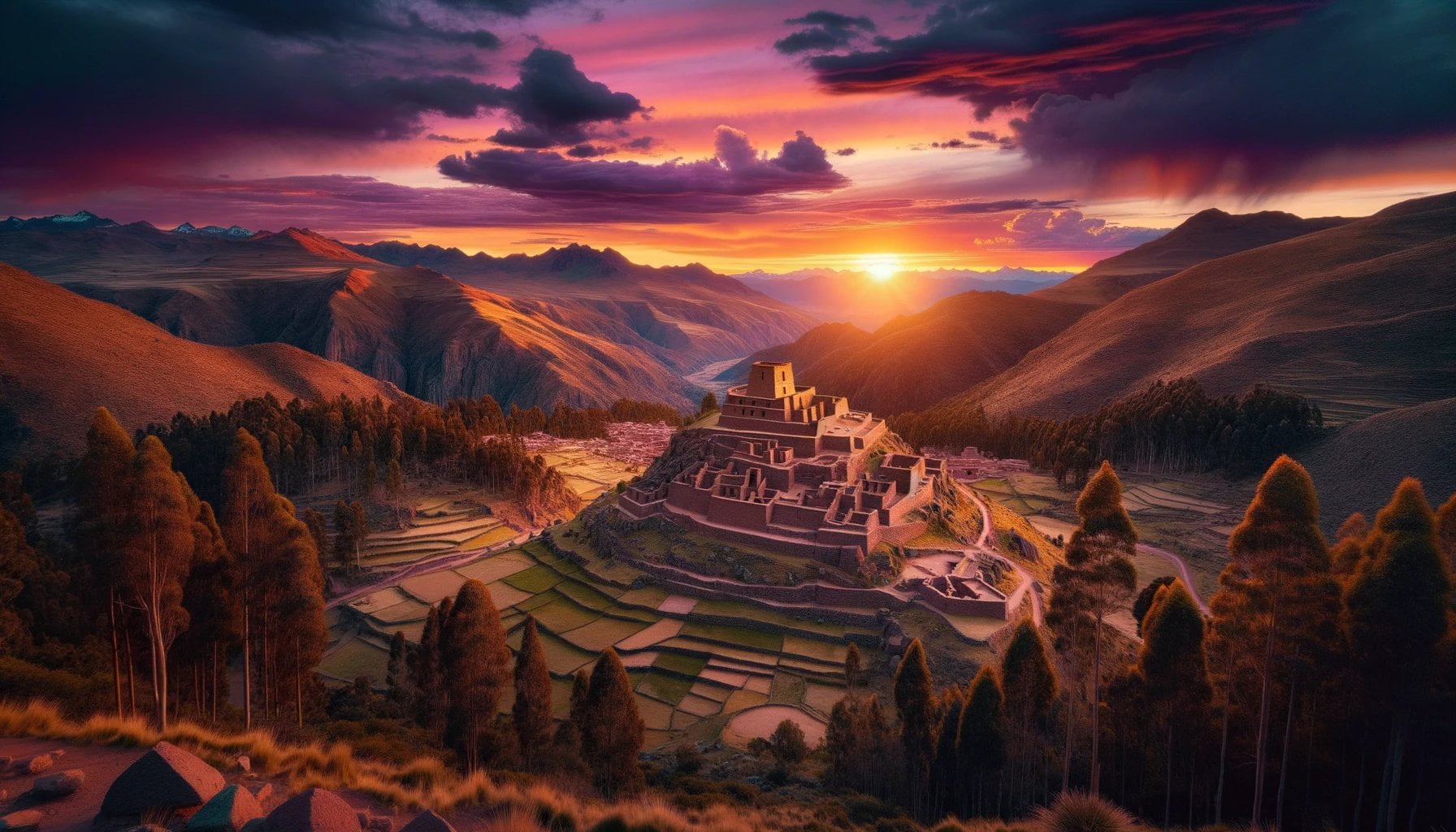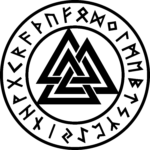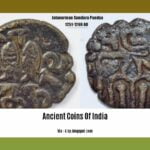Unveiling Bolivia’s Ancient Ruins: Rich Heritage & Mysteries delves into the fascinating world of the Tiwanaku empire, Aymara kingdoms, and Inca empire structures that grace the landscapes of Bolivia. As one of South America’s most accomplished archaeologists and an avid explorer of Bolivia’s ancient ruins, I invite you on a journey of discovery into these remarkable remnants of the past. With a deep reverence for this country’s rich cultural heritage and historical significance, we will uncover the mysteries hidden within the complex structures, decipher the enigmatic symbols left behind, and step back in time to unravel the stories of these ancient civilizations. Prepare to embark on an adventure that will captivate your imagination and leave you with a profound appreciation for Bolivia’s extraordinary past.
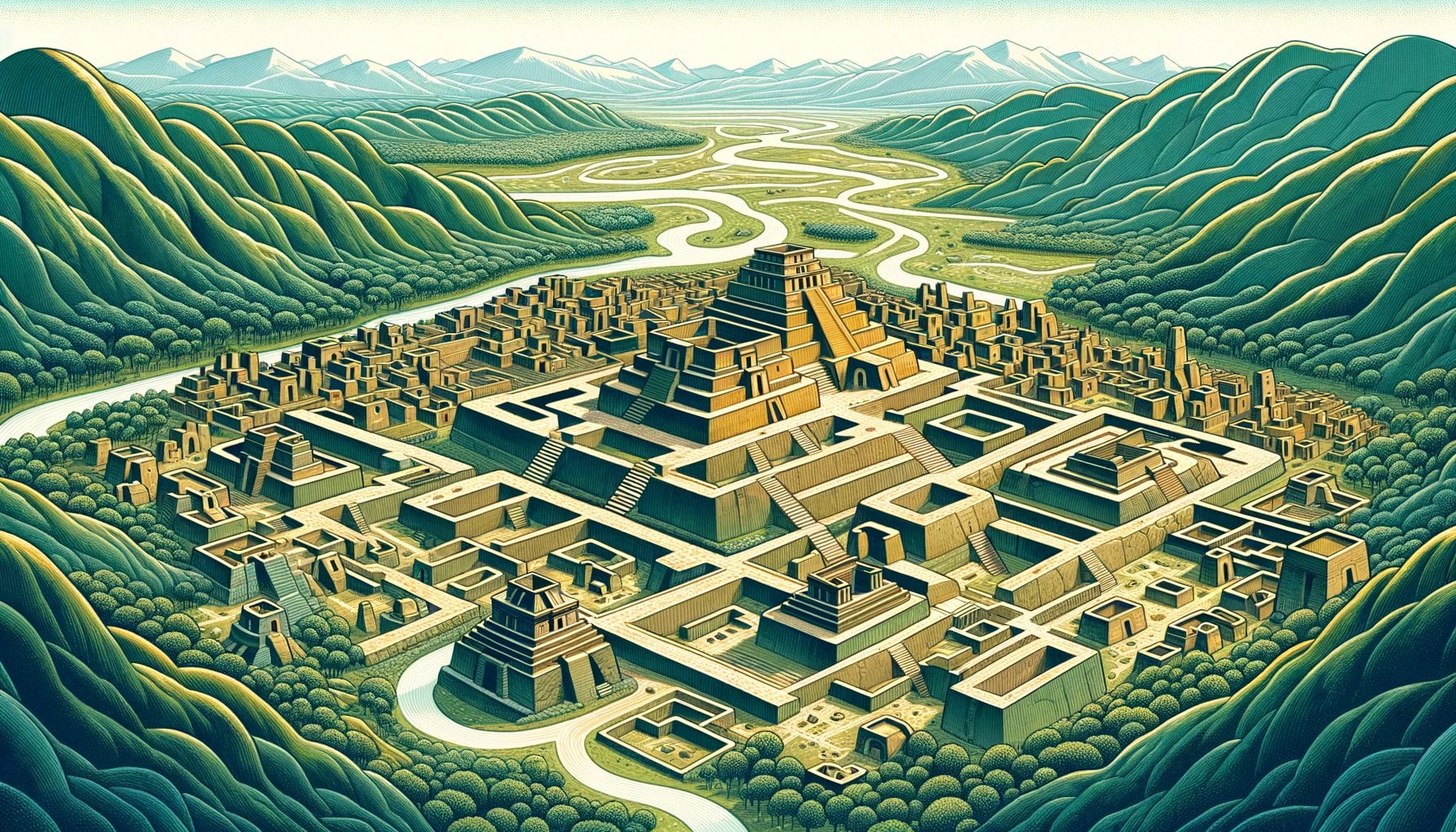
Key Takeaways:
- Tiwanaku is a significant Pre-Columbian archaeological site in western Bolivia, near Lake Titicaca.
- The site covers approximately 4 square kilometers and showcases decorated ceramics and monumental structures.
- The dating of the Tiwanaku site has evolved over the years, with the oldest radiocarbon date suggesting occupation around 1580 BC.
- Tiwanaku was a bustling city with a population exceeding 10,000 individuals during its peak.
- The collapse of Tiwanaku around 1000 AD is still a debated topic, with increased aridity in the region proposed as a possible cause.
- Tiwanaku had strong connections with the Wari culture and shared architectural styles with the Inca civilization.
- Excavated structures within Tiwanaku include the Akapana, Akapana East, Pumapunku stepped platforms, Kalasasaya, Kantatallita temple, Kheri Kala and Putuni enclosures, and the Semi-Subterranean Temple.
- Aerial surveillance methods, such as Lidar and drones, have been employed to gain a better understanding of Tiwanaku.
- Tiwanaku is a testament to the ancient civilization that flourished in Bolivia and continues to captivate researchers studying the region’s rich history.
Bolivia Ancient Ruins
Tiwanaku: A Pre-Columbian Archaeological Site in Bolivia
Located near Lake Titicaca in western Bolivia, Tiwanaku, also known as Tiahuanaco or Tiahuanacu, is a remarkable Pre-Columbian archaeological site that offers a glimpse into the ancient civilization that once thrived in the region. Covering approximately 4 square kilometers, Tiwanaku is one of the largest sites in South America[^1].
Dating and Origins
The dating of Tiwanaku has undergone revisions over the years. While earlier estimates by Arthur Posnansky suggested an age of 11,000–17,000 years, recent assessments based on reliable radiocarbon dates indicate that Tiwanaku was founded around AD 110[^2]. This site’s historical significance lies in its architectural styles, decorated ceramics, and monumental structures, which provide valuable insights into the ancient civilization that inhabited the region.
Peak and Decline
During its peak, Tiwanaku was a bustling city with a population surpassing 10,000 individuals. Its prosperity can be attributed to its complex agropastoral economy and flourishing trade networks. However, around 1000 AD, Tiwanaku experienced a collapse whose exact causes are still debated. Research by geologist Elliott Arnold suggests that increased aridity in the region may have disrupted local agriculture, leading to the downfall of the city[^2].
Interconnections with Other Cultures
Tiwanaku shared strong connections with the Wari culture, as evidenced by the similarity in architectural styles between the two civilizations. The relationship between Tiwanaku and the Wari civilization is believed to have been trade-based or military-oriented. Moreover, the structures within Tiwanaku bear resemblance to those found in Inca cities, suggesting that the Inca drew inspiration from Tiwanaku and other early settlements in the Andean basin[^3].
Magnificent Structures
Excavations at Tiwanaku have unearthed several structures that highlight the city’s grandeur. Notable among these are the Akapana, Akapana East, Pumapunku stepped platforms, Kalasasaya, Kantatallita temple, Kheri Kala and Putuni enclosures, and the Semi-Subterranean Temple[^4]. The Akapana, a cross-shaped structure with a maximum height of 16.5 meters, is believed to have had a sunken court at its center. Unfortunately, this court suffered damage due to looting. The Akapana East, constructed at a later stage, adds to the architectural marvels of Tiwanaku.
Exploring Tiwanaku
To gain a better understanding of Tiwanaku, various modern surveying methods, including Lidar, aerial photography, drones, and terrestrial laser scanning, have been utilized by UNESCO. These methods were employed between 2005 and 2007 to create an aerial view of the site[^5]. These technological advancements have allowed archaeologists to study Tiwanaku’s structures in greater detail, enhancing our knowledge of its historical significance.
In conclusion, Tiwanaku stands as a testament to the ancient civilization that flourished in Bolivia. Its impressive structures and historical connections with other cultures continue to captivate archaeologists and historians, shedding light on the rich history of the region. The ruins of Tiwanaku offer us a unique opportunity to delve into the past and uncover the mysteries of Bolivia’s ancient heritage.
Sources:
[^1]: Tiwanaku – Wikipedia
[^2]: Bermann, M. L. (1994). Lukurmata: Household Archaeology in Prehispanic Bolivia. Princeton, NJ: Princeton University Press.
[^3]: Bruhns, K. O. (1994). Ancient South America. Cambridge: Cambridge University Press.
[^4]: Tiwanaku – Wikipedia
[^5]: Tiwanaku – Wikipedia
If you’re passionate about exploring ancient civilizations, you can’t miss the breathtaking Malta ancient ruins. Embark on a journey through history by clicking here.
For an unforgettable adventure, venture into the heart of Brazil and discover the hidden wonders of its ancient ruins. Click here to uncover the mysteries that await.
Looking to test your knowledge of ancient Rome? Dive into our exciting ancient Roman trivia and put your expertise to the ultimate test. Click here to start your journey through time.
Unearth the awe-inspiring ancient ruins in Egypt, where history comes alive. Discover the remarkable stories carved in stone by clicking here.
Aymara Kingdoms
The Aymara kingdoms were a series of native polities that emerged after the fall of the Tiwanaku Empire in Bolivia during the Late Intermediate Period. These kingdoms, which existed between 1150 and 1477, formed a crucial part of Bolivia’s ancient history. Let’s delve into the fascinating world of the Aymara kingdoms and explore their historical significance.
The Rise of the Aymara Kingdoms
After the collapse of the Tiwanaku Empire, various indigenous societies emerged in Bolivia’s Qullaw region. These societies, known as the Aymara kingdoms, were initially distinguished by their own individual names. There were twelve major kingdoms, including Canchis, Canas, Collas, and Lupacas, among others.
The Aymara people themselves originated from North Argentina and had a presence in Lima during the decline of the Wari Empire. A migration of Aymara peoples contributed to the emergence of independent and rival kingdoms after the disappearance of the Wari Empire.
Government and Territories
The Aymara kingdoms had territories in both the Qullaw region and the inter-Andean valleys. They employed a unique form of government with dual leadership. Each kingdom was led by two rival kurakas (leaders) who governed their respective territories.
Conflicts and Inca Domination
The Aymara kingdoms were not immune to conflicts and power struggles. The Incas, recognizing the rivalries among the Aymara kurakas, exploited these tensions to their advantage. This ultimately led to battles and the domination of the Colla Kingdom by the Inca Empire.
After the Inca conquest, all the Aymara kingdoms were renamed “Collas,” and their territories became part of Collasuyo, one of the four provinces of the Inca Empire.
Unveiling Bolivia’s Ancient Ruins: Rich Heritage & Mysteries
The Aymara kingdoms form an essential part of Bolivia’s rich cultural heritage. By studying the ancient ruins associated with these kingdoms, we gain valuable insights into their history, political systems, and cultural practices.
These ancient ruins provide clues about the architectural styles, religious beliefs, and daily life of the Aymara people. Exploring these sites unravels the mysteries of the past, enabling us to appreciate the achievements and innovations of these ancient civilizations.
Through ongoing archaeological research and analysis, we continue to deepen our understanding of the Aymara kingdoms and their contributions to Bolivia’s ancient history.
Key Takeaways:
- The Aymara kingdoms emerged after the fall of the Tiwanaku Empire in Bolivia during the Late Intermediate Period.
- There were twelve major Aymara kingdoms, including Canchis, Canas, Collas, and Lupacas.
- The Aymara people originated from North Argentina and had a presence in Lima during the decline of the Wari Empire.
- The Aymara kingdoms had territories in the Qullaw region and inter-Andean valleys, employing a form of government with dual leadership.
- The Incas took advantage of rivalries between the Aymara kurakas, leading to battles and the ultimate domination of the Colla Kingdom.
- After the Inca conquest, the Aymara kingdoms were all named “Collas,” and their territories became part of Collasuyo.
Citation:
1. Aymara kingdoms – Wikipedia
2. Ancient Ruins of Tiwanacu and PumaPunku – WORLD MYSTERIES
Unraveling the Secrets of the Inca Empire
Bolivia’s ancient ruins hold a trove of historical treasures, offering a captivating glimpse into the fascinating world of the Inca Empire. Let’s explore some of these ancient sites and uncover the rich heritage and mysteries of the Inca civilization.
Chincana: A Window into Inca Trading Hub
Located on the northern side of Isla del Sol in Lake Titicaca, Chincana stands as a testament to the significance of the island as a trading spot for the Incas. Once a bustling settlement, these now-ruined structures provide valuable insights into the Inca Empire’s trading network. [^1^]
Tiwanaku: Unveiling Ancient Architectural Marvels
Spread across 4 square kilometers near Lake Titicaca, Tiwanaku is one of the largest archaeological sites in South America. Decorated ceramics, monumental structures, and terraced platforms grace this remarkable site, showcasing the Inca Empire’s architectural prowess and cultural heritage. [^2^]
Journeying Along the Inca Steps
Traverse the 206 stone steps, a striking testament to the Inca Empire’s ingenuity, leading to the town of Yumani. These remarkable steps highlight the skillful craftsmanship of the Incas, providing a chance to walk in their footsteps and marvel at their architectural mastery. [^3^]
Rock of the Puma: A Sacred Icon of Inca Spirituality
Immerse yourself in the profound spiritual beliefs of the Inca Empire at the Rock of the Puma. Tucked away in Lake Titicaca, this sacred rock is believed to be the birthplace of the sun and moon, enchanting visitors with its mythical significance and cultural reverence. [^4^]
Glimpse of Inca Treasures at the Gold Museum
Discover a treasure trove of Inca artifacts and treasures at the Gold Museum. This small museum houses a collection that highlights the Inca Empire’s wealth and craftsmanship, providing a rare opportunity to admire their artistic achievements. [^1^]
Revealing Inca Civilization’s Complexity
The Inca Empire was a complex civilization, deeply rooted in elaborate religious practices and advanced engineering techniques. The Inca people worshipped various gods and deities, drew inspiration from ancient cities like Tiwanaku, and created enduring architectural marvels that still astound us today. They communicated through a unique system known as the quipu, and their agricultural prowess sustained their civilization. [^5^] [^6^]
Key Takeaways:
– Chincana on Isla del Sol offers insights into Inca trading networks and the empire’s reach.
– Tiwanaku showcases Inca architectural mastery and cultural heritage on a massive scale.
– The Inca Steps exemplify the empire’s engineering ingenuity and provide a glimpse into their daily lives.
– The Rock of the Puma stirs the imagination with its mythical significance and spiritual beliefs.
– The Gold Museum houses a collection of Inca treasures, providing a glimpse into their opulent civilization.
Sources:
– Atlas Obscura
Note: The content of this article is based on the context provided and does not reflect personal opinions or experiences.
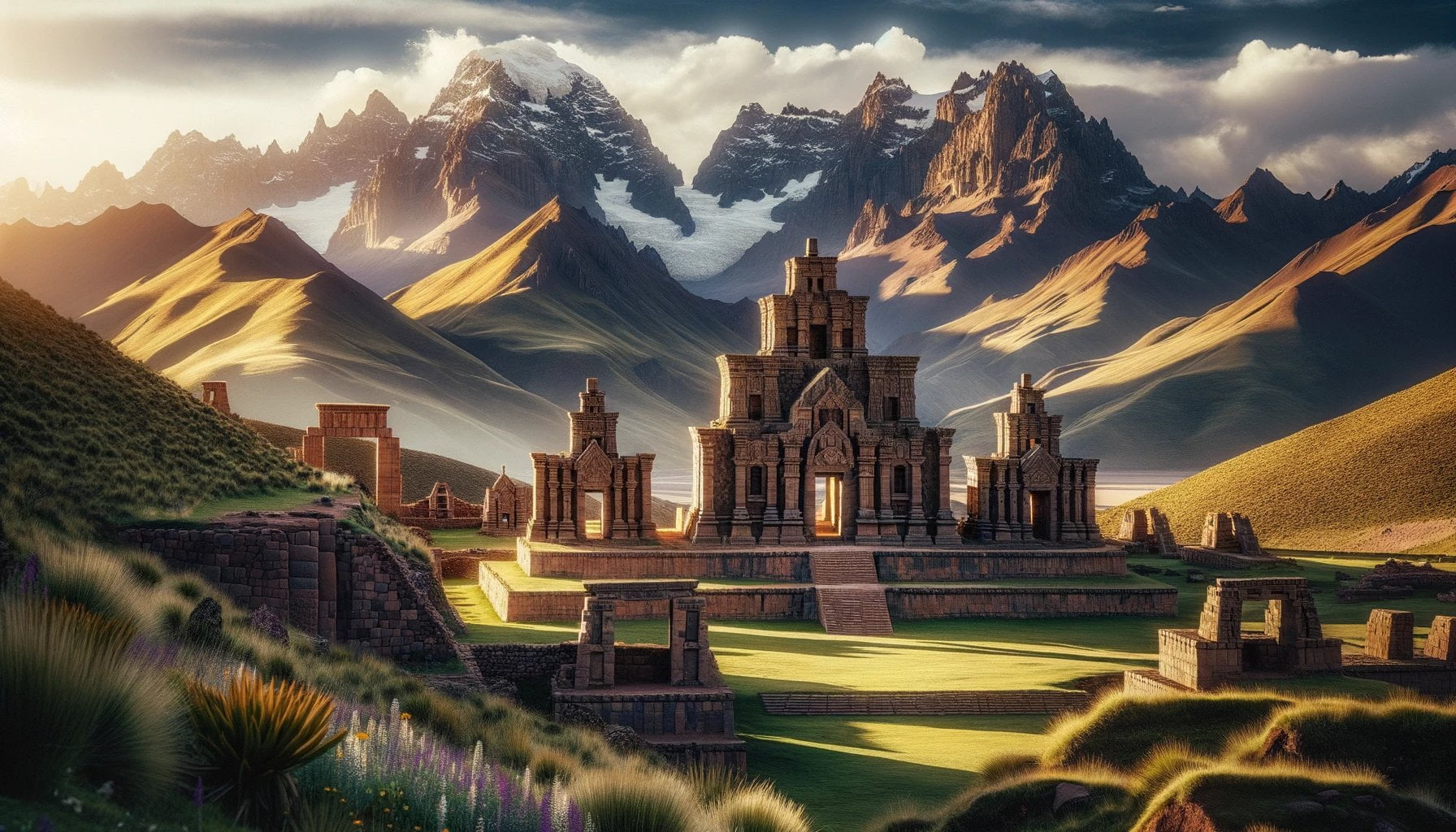
FAQ
Q1: What is Tiwanaku?
A1: Tiwanaku, also known as Tiahuanaco or Tiahuanacu, is a significant Pre-Columbian archaeological site in Bolivia near Lake Titicaca. It is considered one of the largest sites in South America, showcasing decorated ceramics and monumental structures that provide insights into the ancient civilization that once thrived in the region.
Q2: When was Tiwanaku founded?
A2: Recent statistical assessments estimate that Tiwanaku was founded around AD 110, supported by the absence of earlier ceramic styles.
Q3: Why did Tiwanaku collapse?
A3: The exact reasons behind the collapse of Tiwanaku around 1000 AD are still debated. Some studies suggest that increased aridity in the region may have affected local agriculture systems, leading to the collapse of the site.
Q4: What were the Aymara Kingdoms?
A4: The Aymara Kingdoms were native polities that emerged after the fall of the Tiwanaku Empire in Bolivia during the Late Intermediate Period. They were geographically located in the Qullaw region and existed between 1150 and 1477.
Q5: How many Aymara kingdoms were there?
A5: There were 12 major Aymara kingdoms, including Canchis, Canas, Collas, and Lupacas, among others.
